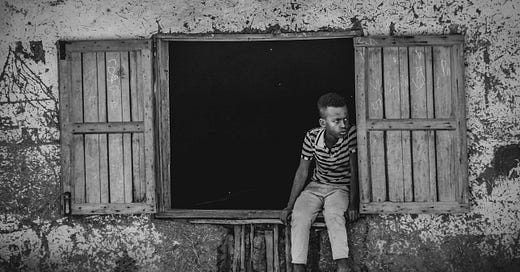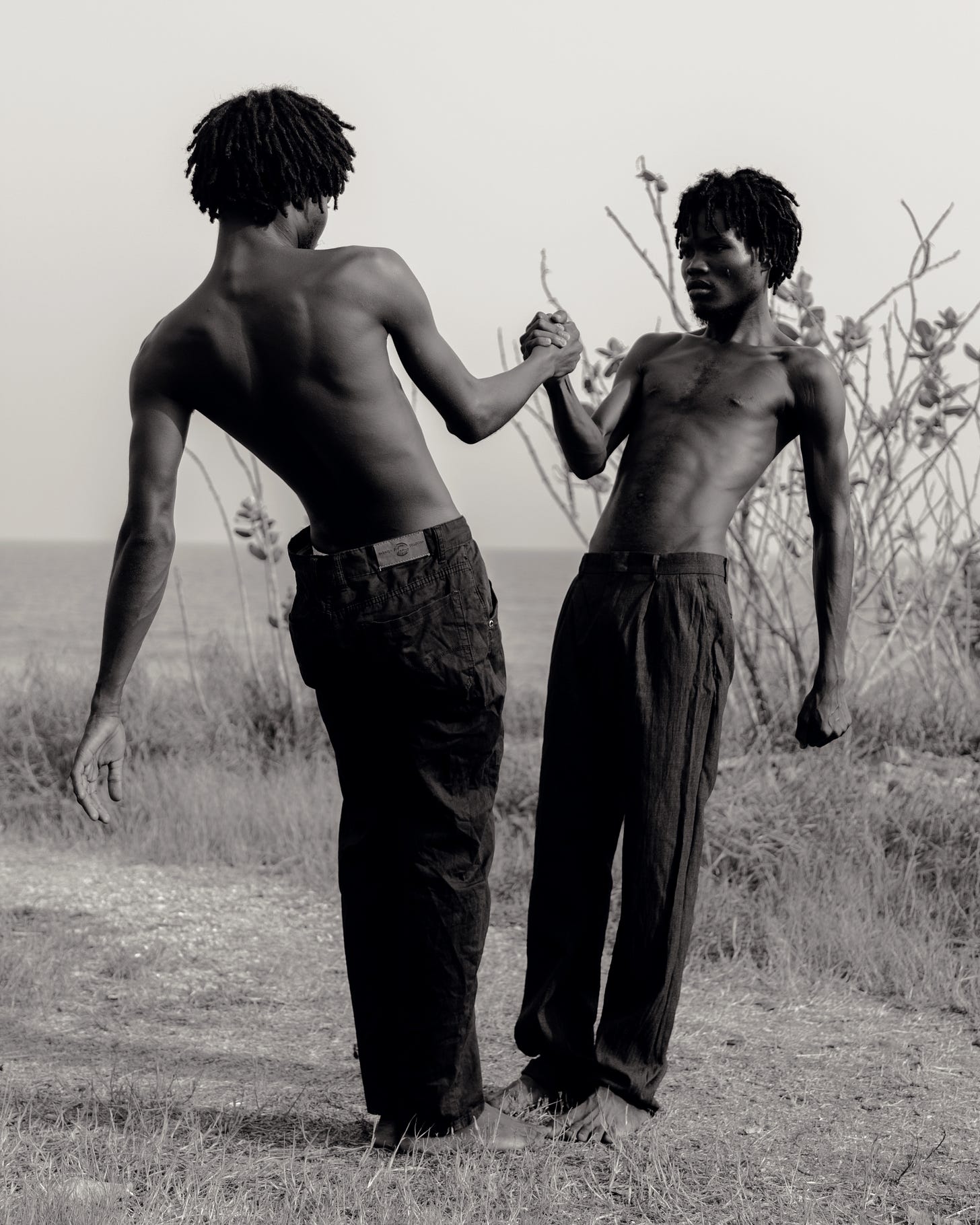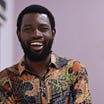The stripes on the boy’s footwear are a mimicry of his shirt. Leaning to the left, his gaze is serious, focused outward, as he sits, legs-hanging, on the sill of a wide-open, grim-looking window. Daylight floods his face but does little to pierce the darkness in the room behind. Stains and illegible scribblings on the old, wooden boards seem like extensions of scratches on the mud wall, and like varicose veins an irregular line of logs supporting the frame is laid bare by missing plaster, making the central part of the photo resemble a propped-up, black canvas.
— Onotu David Onimisi
“The eyes of a person is the window to their minds.”
I was the in-house photographer, and part of a charity team visiting schools in rural areas within Shakiso in Ethiopia to offer hygiene education and hygiene related products to female students when I noticed the little boy sitting on the window of his room and watching his younger sister and other girls receiving gifts, and lessons. I intentionally framed the shot to capture not just the boy but his immediate environment.
I chose this photograph for its sheer power and the questions it evokes with regards to the everyday life of people. It is often said that the eyes of a person is a window to their mind. But how true is it really? In this photograph the space beyond the window is pitch dark, and whatever it harbours remains unknown. Sometimes the human mind is the same way. Looking at the little boy sitting on the window between the darkness of the room, and the visible outside, I began wondering what could be going on in his mind as he watched the girls. I could make a few guesses but like the darkness behind him, I can only guess, and not be certain about his thoughts. This makes the picture something to ponder on.
I like to refer to my approach to photography as artistic or humanist in style. I am more drawn to the experiences, and momentary human needs of people. Capturing human subjects when they are unaware, unprepared and spontaneous in their activity is for me a better show of their true and unintended condition. Images captured under such moments may reveal sadness, happiness, or even indifference. This emotional angle adds a quality that may or may not be evident in their environment. From an observer’s point of view, this kind of approach endears me to people without judgement, it helps me understand people and life better. I believe photography is most impactful when shared as it aids reflection on actions and how such actions can be improved on or refrained from. In other words, it serves as a mirror that teaches people what they want to see repeated or disregarded.
— Minyahil Comander
About Minyahil Comander
Minyahil Commander, is an Ethiopian photographer whose love and passion for photography began as a little child from taking photos using his father’s mobile phone. He continued on the part of photography all the way to college where he enrolled to study at the Turmi Film College. He developed a fondness for travelling around Ethiopia, because it provides him an opportunity to take photographs of different places and people. Today, he owns and manages a photo studio, and is currently working on a photography exhibition. See more of his work on Threads.
LAST WEEK — “Brother’s Keeper” by David Nana Opoku Ansah
I reached out to an art director friend Kofi Annan who happened to know twins in our neighbourhood. We quickly casted the brothers and briefed them about how we wanted to portray and play on the dynamic between twins. In the end, the photograph felt like people floating into each other, which elated me as I haven’t felt that from an image in a while.
This is the 116th edition of this publication, edited by Onimisi David Onotu, one of our editorial fellows. The newsletter also read on web (best for viewing images), and via the Substack iOS/Android apps.
TENDER PHOTO is a newsletter on African photography. Every Wednesday we feature a photograph and a short caption about it, and include a statement from the photographer. Last year, we published commentaries or photo-essays in response to photographs previously featured on the newsletter, including CORRESPONDENCES, CONCORDANCE, KINDRED, and INDEX. The ongoing series, AFFINITIES, ran between March 1–April 26.
Our goal is to work with African photographers by creating a platform in which they lead the cataloguing and engagement with their work.
Thank you for reading. If this newsletter was shared with you, consider subscribing, or forward to a friend. Please whitelist the newsletter to ensure you never miss it.







Awesome review